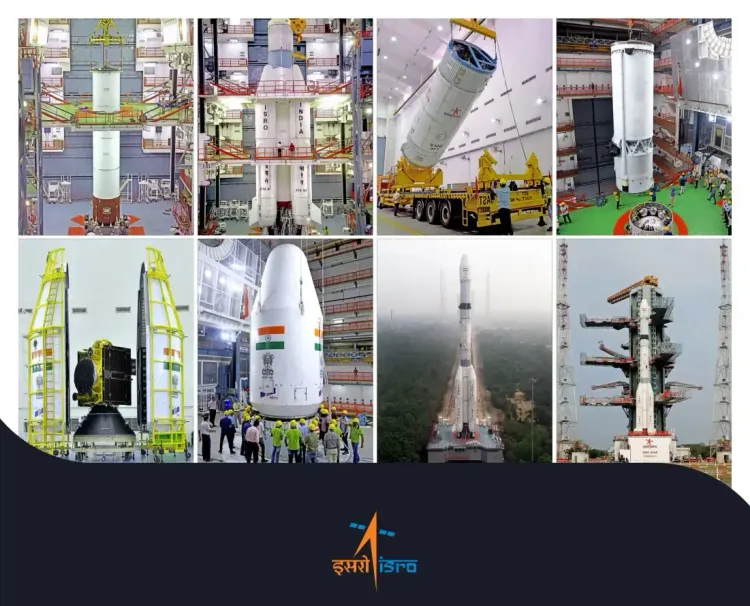ISRO Set for Milestone 100th GSLV Launch Tomorrow

Synopsis
Key Takeaways
- 100th GSLV rocket launch by ISRO.
- Launch scheduled for January 29 at 6:23 am.
- NVS-02 satellite for NavIC system.
- GSLV-F15 features indigenous cryo stage.
- NavIC provides accurate positioning services.
New Delhi, Jan 28 (NationPress) ISRO is poised to achieve a significant milestone with the launch of its 100th GSLV rocket from the Satish Dhawan Space Centre in Sriharikota on January 29.
The GSLV F15 is scheduled to lift off from the second launch pad at 6:23 am on January 29, carrying the NVS-02 navigation satellite.
This marks the 100th launch from Sriharikota, with the first major rocket, the Satellite Launch Vehicle (SLV), having lifted off from here on August 10, 1979.
ISRO shared on social media: “Standing tall and ready for the skies! Here’s the mighty GSLV-F15 all set to launch the NVS-02 satellite.”
The GSLV-F15 represents the 17th flight of India’s Geosynchronous Satellite Launch Vehicle (GSLV) and the 11th flight featuring an indigenous cryo stage.
According to the space agency, “It is the 8th operational flight of GSLV with an indigenous Cryogenic stage and the 100th Launch from India’s Spaceport Sriharikota.”
The payload fairing of GSLV-F15 is a metallic version with a diameter of 3.4 meters, designed to place the NVS-02 satellite into a Geosynchronous Transfer Orbit.
The NVS-02 is part of the second generation of satellites for the Navigation with Indian Constellation (NavIC) system, which is India’s indigenous navigation system.
This navigation satellite system aims to provide precise Position, Velocity, and Timing (PVT) services to users in India and regions extending approximately 1500 km beyond its borders.
The new NVS-02 satellite includes advanced features such as support for the L1 frequency band, enhancing its service reliability.
“The NVS-02 satellite is the second generation of NavIC satellites, utilizing a standard I-2K bus platform. It will have a lift-off mass of 2,250 kg, a power handling capability of around 3 kW, and navigation payloads in L1, L5, and S bands, along with a ranging payload in C-band. It will be positioned at 111.75 degrees E, replacing IRNSS-1E,” ISRO stated.
NavIC will offer two types of services: Standard Positioning Service (SPS) and Restricted Service (RS). The SPS provides positioning accuracy better than 20 meters and timing accuracy better than 40 nanoseconds across the service area.










